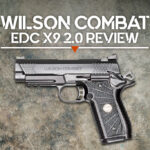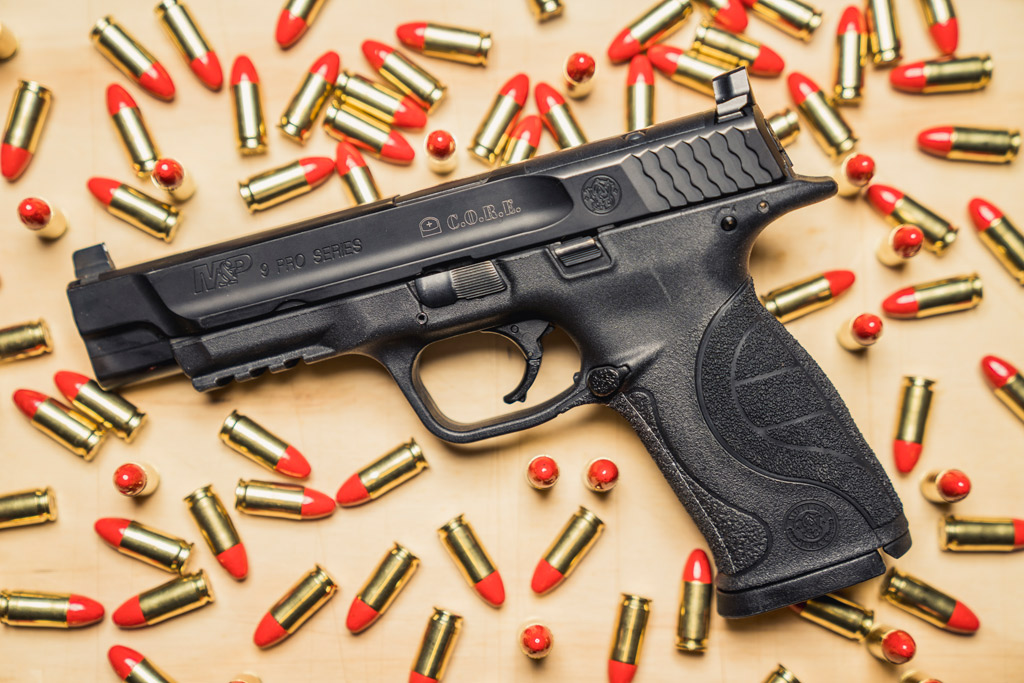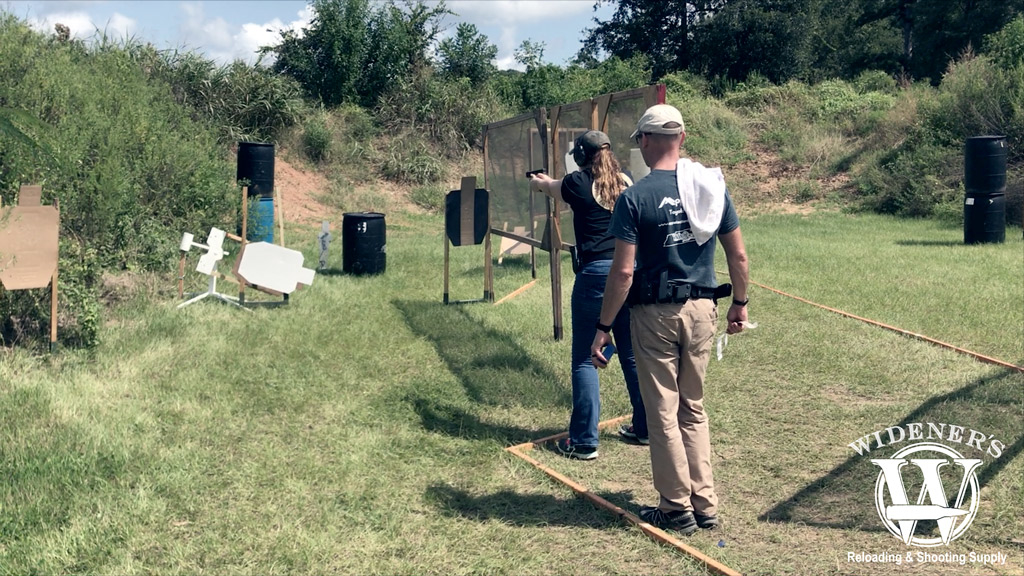

Guest Writer: Kenzie Fitzpatrick
A Guide To Competition Shooting
USPSA is the United States Practical Shooting Association and is part of IPSC (International Practical Shooting Confederation). IDPA is the International Defensive Pistol Association. Although they both are competition based and require moving and shooting, they differ in many ways.
Before attending a match, ask the range officer or shooting range where it’s held if a membership to either organization is required. For most local matches, especially as a first-time shooter, you don’t have to have a member ID number. However, for sanctioned matches, state matches, and some others you’ll need a member number.
How Are Shooting Competitions Scored?

Training with the right targets can make a big difference when stepping into your first competitive shooting match.
Both competitions use a mix of steel and paper targets.
In USPSA, you shoot paper twice and steel until it is knocked down, unless your division says otherwise.
In IDPA, you have a course of fire and are to shoot as instructed depending on the level of the threat, the closeness of the targets, and other factors. IDPA uses a simpler form of scoring in that it takes your raw time to complete a stage and adds on time based on your accuracy. The more accurate you shoot, the less time that gets added onto your score.
USPSA is a little more difficult when it comes to scoring as it takes in the power factor of your ammo. To understand more about that, here’s a helpful article. The way USPSA matches are scored are by a hit factor. Your hit factor is determined by taking the number of points you had, subtracting your penalties, and dividing that number by the time it took to complete the stage. Your power factor changes how much time is added for penalties.
Reloading Strategies
The way you reload in USPSA and IDPA is the biggest difference between the two. In a USPSA stage, your goal is to finish shooting a set of targets, reload your firearm while moving, and be ready to start shooting when you get to next set of targets.
In an IDPA stage, if cover is available, you must reload your firearm behind cover.
Without getting too technical, when you are a beginner in the sport, the range officers and other shooters will walk you through shooting a stage to explain how to shoot it. Just remember that the point of IDPA is shooting and reloading as if you were in a gunfight.
What’s Actually Needed to Shoot a Match?
A standard match for both types of competitions is made up of stages. USPSA stages are more centered around accuracy, speed, and are technical. The focus here is on round count (depending on your division) and determining the fastest way to shoot a stage.
IDPA is based on real-life scenarios as their focus is on defensive shooting.
Because of this major difference, USPSA shooting is very much a prepared sport of having a competition belt, at least 5 magazines on your belt, a competition holster, and other gear. IDPA focuses on guns and gear that you would have on your person in an emergency situation. Therefore, the round count for IDPA is a lot lower. USPSA uses pistols or a pistol caliber carbine depending on the division you choose. IDPA just uses pistols.
Competition Guns, Belts & Holsters
Choosing a gun and holster for USPSA is completely different than choosing one for IDPA.
For USPSA, I would recommend starting out with a gun you are comfortable with shooting accurately and quickly. There are many different divisions to consider such as carry optics, single stack, limited, and more, but before getting into all of that, find a gun that’s easy to find magazines, ammo and a competition holster for. For IDPA, I recommend finding your concealed carry gun that works for you. The whole point of IDPA is to prepare you for a situation in which all you have is your concealed carry firearm and your backup magazines.
The biggest challenge with gear for IDPA is figuring out your concealed carry position and holster. This is where renting firearms is a huge help. Find a range that will rent firearms and possibly even holsters to try out OWB, IWB, small of the back, appendix, and more. When just beginning to draw from your body, do so with an unloaded firearm and practice proper drawing technique. Find a holster that keeps the firearm safe, but is not so hard to get out that there are 3 steps before you can get it out. You want something simple where all you have time for is to react and not think about how to release your gun.
What Is A Good Gun Belt?
Your “competition” belt matters in both disciplines, but in IDPA, your belt is your everyday carry belt. I use a sturdy, American made, custom leather belt from Talon Holsters. The most important part about choosing a belt is making sure whatever holster you use is clipped on all the way if you’re using a belt. The thickness of the belt is important and the quality of the leather is key. For USPSA competition belts, you want to look for something that is thick, but goes through your belt loops, sturdy enough to hold 3-5 loaded magazines on one side, and a competition holster and loaded firearm on the other. I recommend getting started with a Safariland belt or a velcro system high-speed belt.
Guide To Choosing The Right Competition Gun

Look for a pistol that allows you to move through a competition course quickly with accuracy.
There are several things to consider when choosing a USPSA competition gun. Here are some of the things I look for in a competition pistol:
External Safeties Are A No-Go
I’m not a fan of external safeties on competition guns because when you least expect it, it’ll be on. I also shoot a lot of different disciplines that require shooting and moving, so I don’t spend a lot of time looking at my firearm. I’ve also either purchased a firearm with an extended magazine release or installed one myself. A custom funnel-shaped magwell may also be something you will want to consider adding. You don’t want to waste time fumbling to release or load a magazine while you are running through a course.
Think Inside The Box
Size and weight matters in a competition, a gun that’s too heavy or too small may make it difficult for you to accurately shoot it for extended periods of time. There may also be requirements as to what size your pistol can be in a competition, USPSA & IDPA require competition pistols to fit within the dimensions of a specific box for different match games. You can find all of these rules and box sizes on the USPSA & IDPA websites.
When In Doubt, Search The Competition Out
There’s nothing wrong with taking a look at what setup other competitors are shooting with, you’ll often find the “competition” to be friendly and helpful after their match is over. Respectfully asking their opinion on different competition pistol choices may give you insight to new possibilities you hadn’t considered.
Practice & Competition Ammo

It’s hard to go wrong with a pistol chambered in 9mm for competition shooting (featured ammo is Federal Syntech).
Ammo cost is a huge consideration for me. I chose 9mm because it’s cheap and easy to find. I shoot reloaded ammo for practicing and manufactured, higher grain bullets for competitions. The most important thing to do once you have figured out the firearm and caliber is to stick with it. Competitive shooting doesn’t come easy and even after several years of shooting competitions, I still find stages that confuse me and cause me to forget how many rounds I have left in my pistol.
Capacity & Magazine Selection
Magazine capacity differs for USPSA and IDPA. Depending on the division you shoot in USPSA, you can have only 10 rounds per magazine or load up your magazines to the top. I recommend getting 5 magazines minimum per competition gun. If you switch divisions at any time, you’ll always have the gear you need to shoot a match. For IDPA, I recommend getting at least 3 magazines and pouches. Make sure they are easy to use where you don’t have to think about how to extract the magazine. Just like before, you don’t want to have to think in an emergency situation.
Get Involved In Competition Shooting

Attending competition shooting matches is a great way to learn as much as you can before participating.
The best way to start shooting is to attend a match in person. I can guarantee that you will have a lot of fun. Go be a spectator, talk to the range master, and ask as many questions as you can. If people offer to show you their gear or let you use theirs to try it out, always accept. The best way to learn what works best for you is to try out as much as you can before purchasing!


